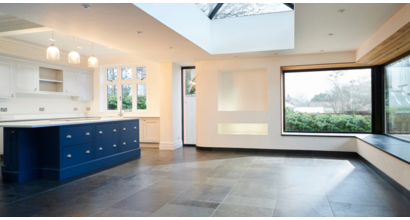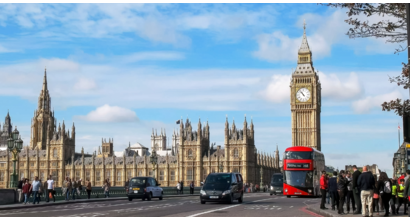The headline report for the 2022-23 English Housing Survey was published back in December, but the detailed reports – including on the rented sectors, quality of housing, and affordability - have only recently been released.
So, what are the main takeaways and things to note from these latest insights into the rental property market in England?
The overarching conclusion from the data is that the Private Rented Sector (PRS) is stable and performing better than has been suggested in the media in recent years. It currently represents 19% of the housing market – the same proportion as a decade ago – with 4.6 million households in privately rented accommodation in England alone.
Affordability is good ‘on average’
Although rents increased significantly between 2022 and 2023 the majority of private tenants (71%) said they don’t have a problem affording rent with only 5% currently or previously in arrears.
Unsurprisingly, private rents were significantly higher in London than the rest of the country, with the London average (mean) being £356 a week, compared to £190 a week outside the capital. Across the country as a whole, average private rents were more than double the amount social tenants paid, at £232 versus £111 a week.
On average, private renters spent a nearly a third (32%) of their household income on housing costs – a higher proportion than homeowners with a mortgage (18% of income) and social tenants (26%). However, it’s worth noting that these affordability ratios have remained around the same levels for the last 15 years, and also that homeowners have to put down a deposit and spend money on maintaining, repairing and improving their properties over time – costs that tenants don’t have, so it’s not a direct affordability comparison.
In addition, spending 32% of household income on housing is only just above what’s considered ‘affordable’ for tenants. Of course, it is an ‘average’ so this means some tenants are paying more and some less.


The average length of tenancies remains stable at 4.3 years
Overall, the average time tenants had spent in their current home was 4.3 years, much the same as it has been for the past 5 years. However this masks big variations between age groups.
The most common length of residence among all private renters was less than a year (22%), which is mainly driven by younger renters, with over half of those aged 16 to 24 having lived in their current home for less than 12 months.
At the other end of the spectrum, the most common length of residence in the same home for those aged 75+ was 10-19 years (21%).
And across all age groups, 39% said they had been renting privately for between three and ten years.
Most tenants feel secure and only a small minority of tenancies end for problematic reasons
When it comes to tenancies ending, only 9% of tenants surveyed who had moved within the previous three years, said they were evicted or asked to leave. And in more than two-thirds of those cases, it was because the landlord simply wanted to sell or use the property themselves.
This means – contrary to what media headlines might lead people to believe - only around 3% of evictions between 2020 and 2023 were contentious in some way.
And the reality is that most tenants feel secure, with three-quarters stating that their rented property feels like home and 78% agreeing with the statement, “I currently feel safe from eviction”.
With the recent publication of the draft Renters’ Rights Bill by Labour, the abolishment of Section 21 should not present any issues as the ending of most tenancies is instigated by the tenant, not the landlord.


Energy efficiency of rented homes has improved slightly in recent years
The average energy efficiency rating (EER) for privately rented homes was 65.5, up from 64 in 2019. Flats were slightly more energy efficient on average, at 67.6%, with houses and bungalows rating 64.1.
In terms of bands, 45% of PRS dwellings were in bands A to C, an improvement from 38% in 2019. 43% had a D rating and the remaining 12% were band E or below.
Given government promises to raise the minimum rating to legally let a property from E to C before 2030, we expect to see these figures change dramatically in the next few years, and proactive moves by landlords to improve the energy efficiency of rental property will ultimately add to the appeal of tenants in terms of their ongoing running costs.
Type and condition of PRS stock
Houses and bungalows make up 60% of properties in the PRS, with the remaining 40% being flats. Private rented stock tends to be older than in other tenures, with the survey showing that almost a third of PRS homes were built pre-1919, compared to only 20% of owner-occupied properties and 7% of social rented housing.
Age naturally has an effect on maintenance needed and a property’s overall condition, so what are the latest figures relating to property standards in 2022/23?
- 21% (just over a million homes) in the PRS did not meet the Decent Homes Standard. This proportion is a slight improvement on the proportion pre-pandemic (23% in 2019). However, in comparison, 14% of owner-occupied and just 10% of social rented homes were declared ‘non-decent’.
- The highest proportion of non-decent PRS dwellings was in the North-West (32%), while the region with the lowest proportion was London (12%).
- Under the HHSRS, PRS properties were also the most likely to have a Category 1 hazard (579,000 homes / 12% of the sector – a slight reduction from 13% in 2019), while social rented homes were the least likely (just 5% of dwellings).
- 9% of PRS homes had a damp problem, compared to 5% of social rented properties and just 2% of owner-occupied homes.
These figures may be partly a reflection of the fact that the Decent Homes Standard does not currently formally apply to the PRS, although rental reform proposals are for this to be imposed in the future. While it is encouraging that four out of every five homes is considered decent, there is clearly still room for improvement.
If you would like to find out more about our services and how we ensure every property we let does meet minimum standards for condition, health and safety, just get in touch with your nearest branch and speak to one of the team.









